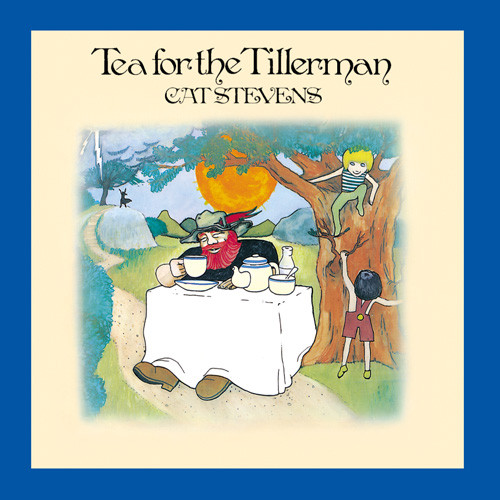Read the liner notes for Analogue Productions 2011 reissue of Cat Stevens’ classic album Tea For The Tillerman and you’re treated to the story of how a modern record company, working hand in hand with the just opened Quality Record Pressings brought a new version of Stevens’ masterepeice to market. The notes describe how “there are so many things perfect about this release” from the sheer status of the album to the quality of the master tapes to the mastering equipment used to the details in the packaging.
Mastering engineer George Marino had the original master tapes in “impeccable condition” to work with, along with some more modern electronics to remaster this legendary album. TFTT was originally mastered by the the great Lee Hulko and Marino had Hulko’s original mastering notes at his disposal as well as some “advancements in cutting lathe technology that make improvements of this reissue possible.” Marino chose a wide-track stereo head for this project, which he says “allows for better signal-to-noise than the normal stereo head.” Regarding the finished record Marino “says he is very pleased with the results.”
Indeed others were also pleased. The footer on the front of the liner notes insert features a quote from Michael Fremmer’s review that says:
“Low level previously buried detail exposed on a dead quiet, beautifully pressed vinyl from QRP!”
Another reviewer at “My Vinyl Review” had this to say:
“This new reissue… is simply the most dynamic, detailed version of this classic album that I’ve heard to date, with more of the vocal nuances, guitar florishes, and bass string vibrations that audiophiles crave. The U.K. pink undoubtedly possesses a rounder overall sound — and some with particularly bright systems or a sensitivity to the hint of stridence or sibilance in the vocals, might appreciate the touch of tube compression found on the original U.K.”
If you’ve read any of my other articles here on TBR you know where I typically stand on modern reissues. But even though I’ve been disappointed with nearly every one I’ve heard, I hold out hope that someone gets it right. After all, the folks at AP and QRP didn’t set out to make a lousy record. On the contrary, they were clearly swinging for the cheap seats.
Also, I continue to be baffled by the problems I hear with the majority of modern reissues and so I keep trying to borrow them (I try to avoid buying them) and play them in an effort to understand what keeps going wrong. When a friend of mine agreed to loan me his copy of AP/QRP’s TFTT I knew I had a golden opportunity to see if this version would hold its own, or even surpass, the original brown label US pressings I own. I was also curious to really sit down an play all my copies, including a UK Island pink rim version that I’d bought recently.
Before I go forward I want to say that I did not buy any of my copies of TFTT from Better Records. In my mind this makes for a more compelling shoot out. I am comparing the AP version to what I might argue are your “run of the mill” pressings. Given that copies of this 2011 AP version sell for upwards of $50 and your average A&M original can be bought for about $5, I think really knowing what you’ll get for the extra money when buying the AP version matters.
So what do you get with AP’s TFTT? Well, the second review above actually states it quite clearly – “bright (ness)…stridence…sibilance.” I would also add to that AGGRESSIVENESS and EDGINESS. Is AP’s version also “dynamic” and “detailed”? Yes absolutely, but so are the other three copies I have. Does the AP version have “more vocal nuances, guitar flourishes, and bass string vibrations” than the vintage copies? Absolutely not! In fact the vocals on the AP are the biggest problem with this version.
Look, TFTT is an intimate record. Cat is sitting very close to the mike and he vacillates between quietly sharing his most intimate thoughts and belting out his most impassioned feelings. Any copy of TFTT needs to capture this intimacy, and while not every copy I owned was equally successful, the best of the vintage versions placed Stevens in space with air around him, bringing his performance to life. The AP version pushes him so far up front that it literally robs the performance of this intimacy. I won’t go so far as to say that it sounds like he’s singing with a megaphone instead of a microphone, but it’s close!
I had planned to write a detailed take down of AP’s TFTT and to sing the praises of the various copies I owned with the UK pink rim Island in particular demolishing AP’s version on every single conceivable level. But I realize now I don’t need to. I’ve said enough. This is Cat Stevens, and if the vocals aren’t right then what have you got? Some highly detailed guitar picking? Please!
Sorry, I promised myself I wouldn’t go negative. I have no doubt a lot of people out there love AP’s version of TFTT. Indeed the friend that loaned me his copy was one of them until he heard my Island pink rim version. If you want to hear the impromptu review he gave of the AP’s version after hearing the first 30 seconds of “But I Might Die Tonight” here goes:
That sounds terrible. Can you please turn it off?
Again, no more need be said.
